Fish Facts
Fish Facts: The Largest, Smallest, Fastest & Dumbest In The World
Fish are amazing animals. They are extremely diverse in shape, color and habit – far more so than any other vertebrates. They are easily the most successful of the vertebrates.
I hope that in reading these pages you will come to understand, admire, respect and even love the beautiful, fabulous fish.
You should realize that an incredible 72% (nearly 3/4s) of the world’s surface is covered with water. That water, as a medium, is 800 times denser than air. Which means it supports your body a lot better than air does!
And that water is the home of (and the basis for) all life. So it seems obvious that living in water is a good idea…
And that’s exactly what fish do!
So, anyway, let’s kick off with these incredible facts about fish. But first, how many species of fish are there?
How Many Species of Fish?
Yes it is true, in terms of numbers of individuals and in terms of numbers of species – fish easily out compete all the other vertebrates.
There are about 34,310 species of fish divided up into 64 orders, 572 families and 5,148 genera, as of July 2020 (according to FishBase). Of which, just over half live in fresh water – which is amazing when you think about it because fresh water accounts for about only 0.3% of the free flowing water on planet Earth.
However, science has been naming new species at the rate of about 200 or more per year, over the last decade.
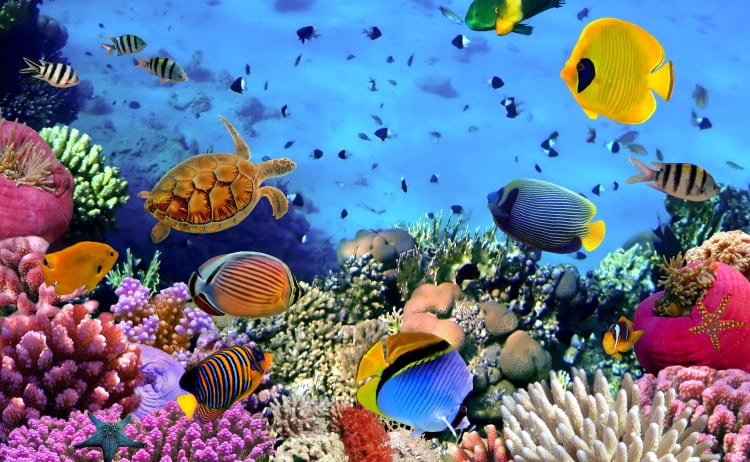
This means there are in fact about as many species of fish as there are species of amphibians, birds, mammals and reptiles all added together.
Most fish live in the shallow waters of the continental shelves. The continental shelves make up less than one twentieth of the surface of the oceans – yet the greatest diversity of fish live there.
The sea floor of the continental shelf is the most diverse of all marine habits. Unfortunately it is also the most often polluted, and most easily damaged by bad fishing techniques.
Our Distant Human Ancestors
Somewhere in the dim dim history of our evolution is a species is a fish. Or something like a fish.
Fish were the original vertebrates. They first appeared about 500 million years ago – as far as we know – long before the reptiles, mammals and the birds. During this time they have evolved into a myriad of different forms and learned to survive using a huge variety of behaviors
Unfortunately fish are often hard to see…
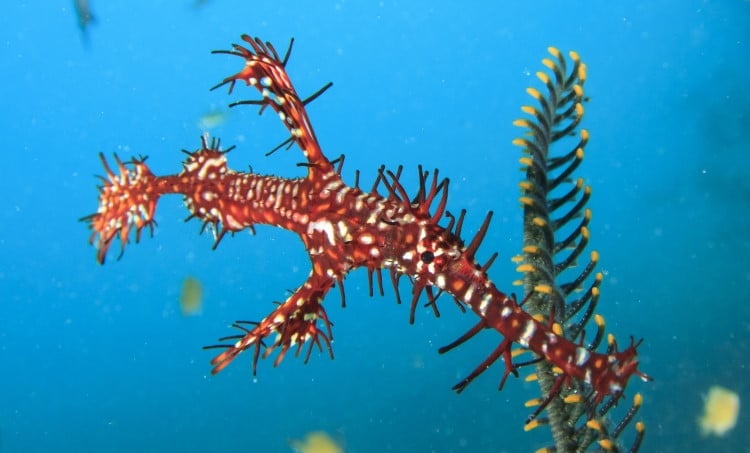
They live beneath the surface of the life-giving waters of this planet – and this means they are not nearly as well known as they should. So please enjoy the rest of these incredible fish facts perhaps say thank you to the next fish you eat for giving up its life for you.
Also, don’t forget you can use the links at the bottom of this page to navigate through the rest of the fish section of our site.
Amazing Facts About Fish
Bony Fishes (Osteichthyes) have far less weight of bones and far more weight of muscles in their bodies than either Birds or Mammals (fish average 40% to 65% muscle). This makes them extremely good value food on a pound-for-pound basis.
Fish live everywhere… from the surface of many waters, to the bottom of the deepest oceans. And from the nearly frozen waters of the poles (about 200 species), to the hot springs – with water temperatures as high as 39o C (100o F).
In fact, 300 species of fish live their lives permanently so deep below the surface of the sea (more than 1,000 metres down) that they never see the light of the sun.
Fish like warm water… so the closer you get to the ‘tropics’, the greater the diversity of fish species you will find.
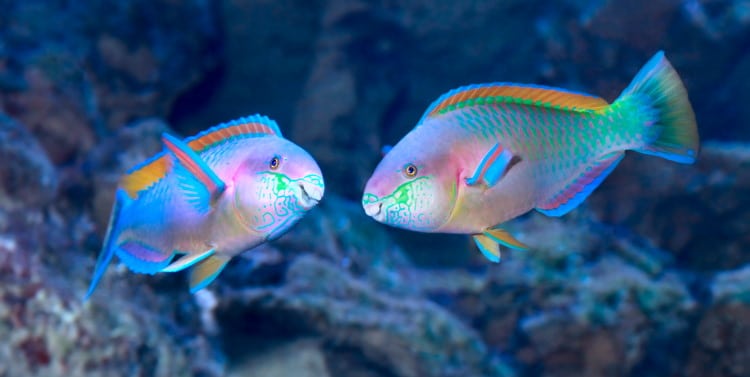
About 40% of all fish species live in freshwaters.
More than 700 species of fish are known to be in danger of becoming extinct. In reality the number is probably much larger, but in many parts of the world we have little or no information on the state of fish populations. In the USA – one of the best surveyed countries in the world – 120 species are registered as threatened.
Some fish undergo sex change as a natural part of their lives!
Fishes such as Wrasses and Parrotfishes are all born female, with only a few individuals becoming male later in their life. Contrariwise, Clownfishes are all born male – and later when the existing female(s) die, the most dominant male(s) become female.
The Molly (Poecilia formosa) exists as an entirely female species. Reproduction is by means of parthenogenetic clones. However, in order to stimulate the reproductive process, these female Mollies need to mate with a male – in fact one from a different species, as there are no male Mollies.
The First Fish
Science now generally recognizes the Conodontia as the first true fish. Their fossil remains reach back as far as 515 million years ago and looked like small Hagfish (less than 7cm or 3.5 in long).
However, in 2001, two Chinese scientists described two new species of possible vertebrates from strata dated to 530 MYA. These two organisms Myllokumingia fengjiaoa and Haikouichthys ercaicunensis appear to be related to early Lampreys and may in time be proven to be the earliest known fish.
The Largest Fish In The World
The largest ever fish was a shark as far as we know. But not the whale Shark of our modern seas. Instead the title must go to a giant relative of the Great White Shark called the Megalodon Shark or Megatooth Shark (Carcharodon megalodon).
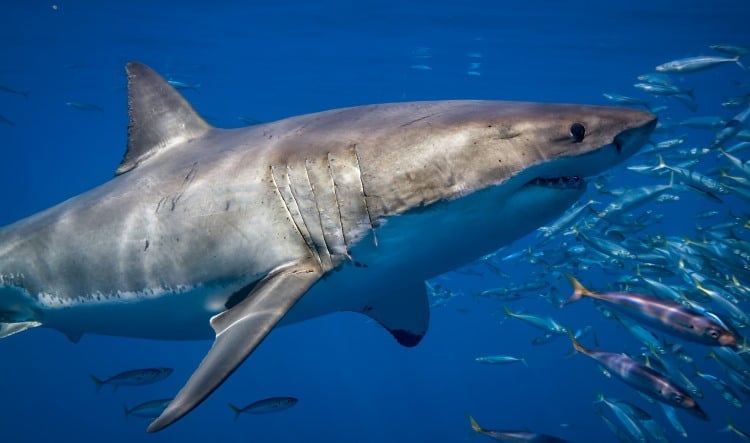
This truly impressive carnivore – now known only from the fossil record of its teeth – probably lived between about 20 to 2 million years ago.
A modern estimate of its size, based on reconstruction of the jaw and comparison with today’s Great White Shark, suggest it probably was about 14.7 m (48.4 feet) long and weighed in at around 35,000 kg (77,092 lbs).
The Smallest Fish In The World
By smallest, here I mean shortest as an adult. Obviously newly hatched fry can be much smaller than the dimensions recorded here.
Three species of fish are reported to have lengths of 1 cm. Pamphorichthys minor, Photocorynus spiniceps and Trimmatom nanus.
However, the Guinness Book of Animal Records states that T. nanus is recorded as having an average length of 0.86 cm for males and 0.89 cm for females.
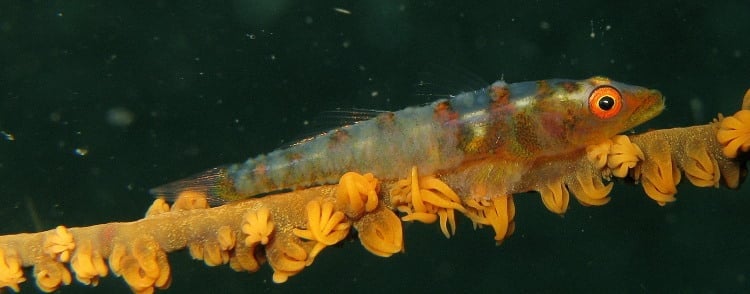
Quite where the confusion comes from I do not know, as both these organisations work hard to get their figures correct. To answer our question, it really doesn’t matter, because there are now at least two other species known to science that are even smaller than T. nanus (even at the shorter Guinness Book of Animal Records length).
The larger of these is Australian Matsubarichthys inusitatus, which just scrapes past T. nanus at 0.84 cm in length. However, only one specimen of this fish has ever been caught, so we do not know what the average size of the species is.
Until recently the smallest known fish to science was the Plainchin dreamarm, Leptacanthichthys gracilispinis. This is a type of angler fish found off the coast of Canada, it has an average length of 0.8 cm or just one third of an inch.
In January 2006 scientists announced the discovery of a new genus of fish with at least one (as of yet, undescribed) species, that is now the smallest know fish on record. Scientists reported in a journal published by the UK’s Royal Society that individuals of the Paedocypris genus can be just 7.9mm long at maturity.
Unfortunately they also report that these fish – which were found in the peat swamps of the Indonesian island of Sumatra – are already threatened with habitat loss and that other similar species may be lost even before we get to know them.
The Tastiest Fish!
This is obviously a matter of opinion, as taste is subjective and cannot be scientifically verified. Also the cooking method and level of expertise is somewhat important…
So this is a question you have to answer for yourself!
Some common choices for the tastiest fish are: Catfish. Rainbow Trout, Salmon, Sea Bass, Snapper and Trigger Fish… but many other species of fish make excellent eating as well.
The Smartest Fish
Nobody can for sure which fish is the smartest because very few studies have been carried out that directly compare the intelligence of different fish.
However recent data suggests that many fish are much more intelligent that once supposed. In fact, over 500 studies of fish intelligence have revealed some remarkable things.
So to work out the smartest fish, the best we can do is look at the physical dimensions of a fish’s brain. We cannot just look for the biggest brain… naturally bigger animals have larger brains – yet nobody would suggest a cow was smarter than a dog.
Two parameters that can help us assess a fish’s intelligence are the relative ‘brain weight’ to ‘body weight’ and the complexity of the brain. Sadly, I have found no information comparing the brains of fish in terms of complexity, or surface area (foldedness).
This leaves us with the brain to body weight relationship.
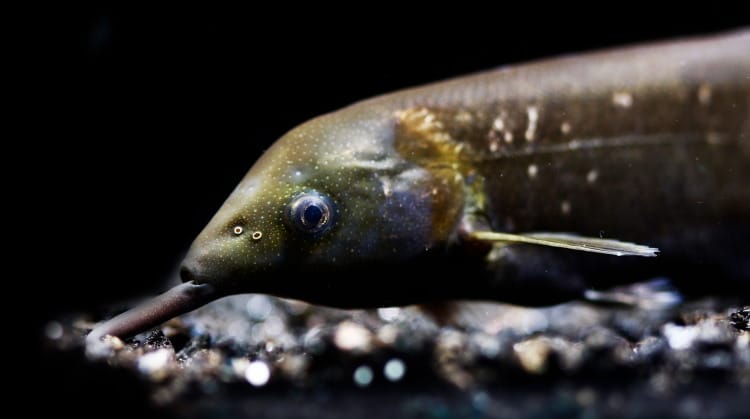
The winner in this category is the Elephantnose fish (Gnathonemus petersii) which has a brain that amounts to 3.1% of its total body weight. To put this into perspective most fish have brains that weigh less than 1% of their total body weight… and even the human brain only averages at 2.3% of body weight!
Whether this makes it the world’s most intelligent fish however I cannot say.
The Elephantnose fish is a tropical, freshwater fish from Central Africa that grows to a maximum length of 35 cm (14 ins). It is a species that is commercially available to aquarists and it is known for its playful behavior.
It also seems to have a strange karma… because not only is it incorrectly named (it is its chin not its nose, that is enlarged) but it is also spelled incorrectly (in terms of its scientific name) in at least 3 major works on fish that I have looked at – including a university level textbook.
The Dumbest Fish
Yet again we cannot be sure… but what we do know is that Acanthonus armatus – a deep sea Cusp Eel – has the smallest brain, relative to body size, of any fish, or even of any vertebrate.
The Fastest Fish
Finding accurate data on the fastest fish in the world has been difficult.
This is because actually measuring the speed of a given fish according to a given formula is itself very difficult. Nevertheless it seems that there are two species of fish that would be pulled over by the police if they were caught swimming flat out down the highway!
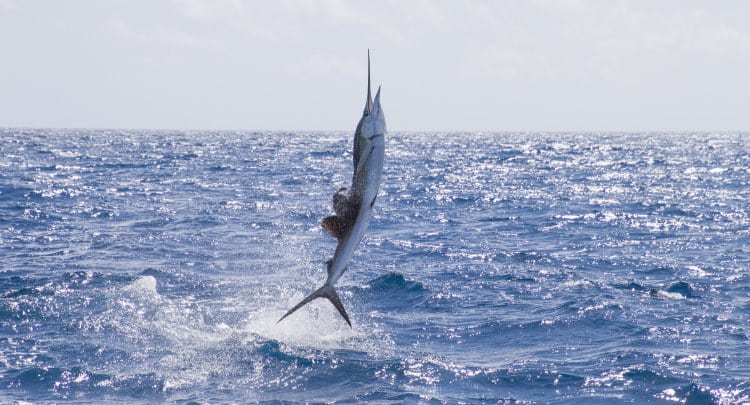
The slower of these is the Cosmopolitan Sailfish (Istiophorus platypterus), which was recorded to take out 91 meters (300 feet) of line in three seconds – which is the equivalent of 109.2 km/h or 72 mph.
However, swimming up the wing of a fishy football field, this champion would be left standing by a top notch Black Marlin (Makaira indica) which has apparently been timed at 130 km/h or 86.7 mph (Block, B.A., D. Booth and F.G. Carey, 1992)
Which Fish Lays The Most Eggs?
The Grey Grouper, Epinephelus tauvina a female of which may lay as many as 340 million eggs in a single season – however the eggs are very small, being around 0.75mm in diametre.
Which Fish Produces The Least Eggs Or Young?
The prize here is shared between at least three members of the genus Mobula, more commonly known as Devil Rays.
These are the Mobula tarapacana the Chilean devil ray, Mobula japanica the Spinetail mobula, and Mobula thurstoni the Smooth-tailed Mobula.
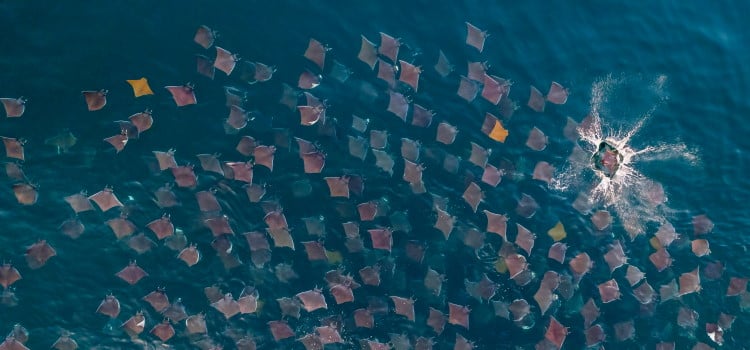
Each of these produces only one egg… and subsequently only one young per season. These young are born alive and never know the open water as an egg.
There are several other members of the genus Mobula but their reproductive biology is poorly known.
The Most Expensive Fish
The most expensive fish dish in the world is caviar… which is basically fish eggs in wine or vinegar, plus a little salt.
And the best caviar comes from Sturgeons, in particular the Russian Sturgeon (Huso huso).
Sturgeon are large fish, although the average size of specimens caught now is much less than it was 50 years ago. Nevertheless one female can produce a lot of caviar!

The record is for a female caught in 1924 in the River Sosna, a few hundred kilometres south of Moscow.
This specimen weighed in at 1227 kg (2706 lb) and produced 245 kg (540 lb) of best quality caviar. On today’s market this would be worth about $200,000.00 US dollars.
Now that has to be the most expensive fish!
The Most Shocking Fish In The World
Many species of fish have learned to use electricity… for communication, for echolocation, for defence and even for hunting.
Most of these are harmless, but the Electric Eel (Electrophorus electricus) from South America is the king of living generators – and therefore the most shocking fish on earth.
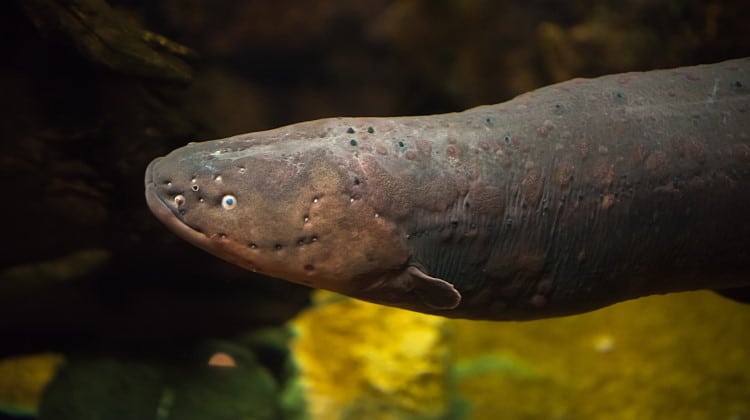
The electric organs can occupy as much as 80% of the animals body and an average specimen can deliver 1 amp at 400 volts!
The record is held be a specimen from the New York Aquarium which was measured delivering a pulse of 650 volts in the 1930s.
This voltage would easily kill an adult human.
Most Poisonous Fish In The World
Poisonous means something makes you ill if you eat it (whereas animals which inject toxins when biting or stinging are ‘venomous’). Many fish are poisonous to one degree or another.
The most notorious and most poisonous of these are in the family Tetraodontidae, otherwise known as Puffer fish.
Of these the world record holder for poisonousness is the Death Puffer of Maki-maki Arothron hispidus. The internal organs of this fish are so poisonous that it takes less than 0.1 grams (or 400ths of an ounce) to kill an adult human being in less than half an hour.
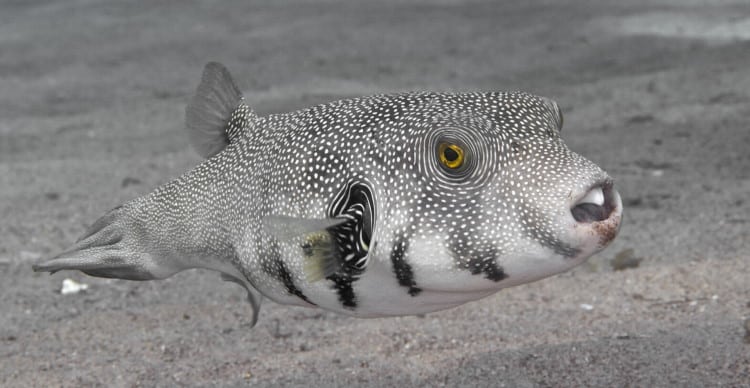
Nevertheless, people in Japan eat the flesh of this fish – which can be consumed safely if it is prepared in such a manner that none of the tetrodotoxin in the organs or the skin gets into the flesh.
The meal is considered a delicacy and the chefs who prepare the meal serve a special three year apprenticeship.
Despite all precautions, however, about 50 people die every year in Japan from eating poorly prepared fish.
The Most Venomous Fish
Fish evolved venom most probably as a means of defence not of attack.
Their venoms therefore tend to be painful rather than fatal.
Also, as with the poisonous fish described above, these toxins evolved to protect them from aquatic predators – there effect on humans is not particularly important from the fish’s point of view!
At least 10 families and forty species of fish have evolved toxins that can be injected into another animal using specially adapted spines.
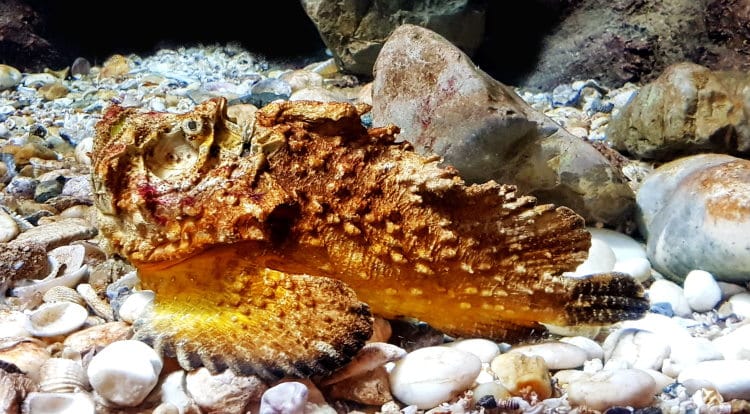
The most dangerous of these are the Stonefish of the family Synanceidae. The family contains four species, the most dangerous of which is the Indian Stonefish, Synanceia horrida.
This species, which can grow to 60 cm (24 ins) in length, has thirteen dorsal spines each connected to its own venom gland.
The fish lives by lying in wait on the sea floor and catching passing prey. When frightened it erects its spines. Most injuries occur as a result of the fish being stepped on.
The spines are so sharp they pass through a beach shoe! Most injuries are not fatal – although some are – but they are always extremely painful.
Fish Used by Humanity
Human beings use fish in various ways, most obviously as food and as pets (ornamental usage), but also for sport. However we have so far only found uses for less than one quarter of all fish species, about 7,396 in total. Of these 4,655 are used in fisheries, meaning we catch them to eat or to use as food for other animals we breed. Currently 358 species are used in aquaculture, bred in captivity for food or stock and 205 species are commonly used as bait in one part of the world or another. Finally about 3,227 species are used as ornamentals.
The Most Fish Caught In A Single Net?
On August the 28th 1986, the fishing trawler M/S Flomann from Hareide in Norway caught 2,471 tonnes of fish in a single throw of a purse seine-net.
This many fish were not counted individually, but an estimate made at the time suggests there were more than 120 million fish in this single catch.
The Largest Fish Ever Caught On A Rod?
The Great White Shark (Charcharodon charcharias). A specimen caught by Clive Green on the 26th of April 1959 off Albany South Australia weighed in at 1,537 kg or 3,388 lb.
The Fish With The Most Limited Distribution?
The Devils Hole Pupfish, (Cyprinodon diabolis), is a small 15 to 20 mm in length, cyprynid type fish found only in a single location – called Devil’s Hole in Nevada USA.
The entire extent of the fish’s normal habit is about 20 m2 and the population ranges between a mere 200 to 700 individuals.
The Most Common Fish In The Sea
This is another unanswerable question, because we just don’t have any way of counting the fish – especially those we don’t eat.
What we can say is that the most common fish that is commercially caught is the Peruvian Anchoveta, Engraulis ringens.
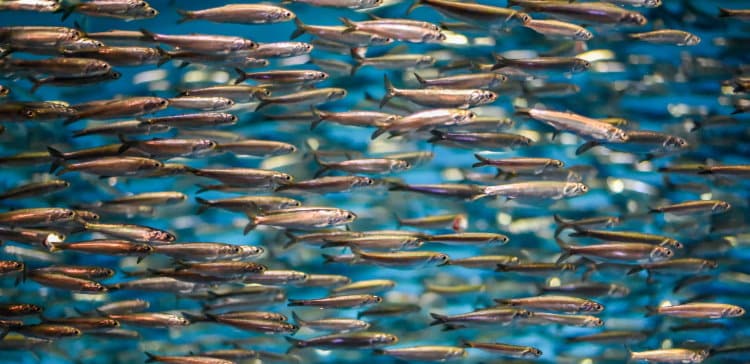
This is a small fish, up to 8 cms long, which is caught by the millions of tons off the Coasts of South America.
However in the 1970s, over-fishing combined with environmental factors caused a crash in the abundance of Anchoveta.
Since then the populations have recovered somewhat – but still show considerable yearly variations.
Another candidate might be Menhaden, but I have not yet been able to track down accurate data on the numbers caught… and this species too is suffering large reductions in population size due to over fishing.
The Longest Lived Fish
As animals go, human beings are pretty long lived.
However on average there a few species that do better than we do in terms of years. Among these, there are number that live in the water… in fact the oldest animal on the planet is a fish, a shark, which some scientists think can reach ages in excess of 400 years.
There are also several species of bony fish that are scientifically reported to have individuals that have lived longer than any human. Two of these are:
- Celebrating 140 birthdays is the Warty Oreo Allocyttus verrucosus,
- The Shortraker Rockfish Sebastes borealis which is recorded as living for 157 years.
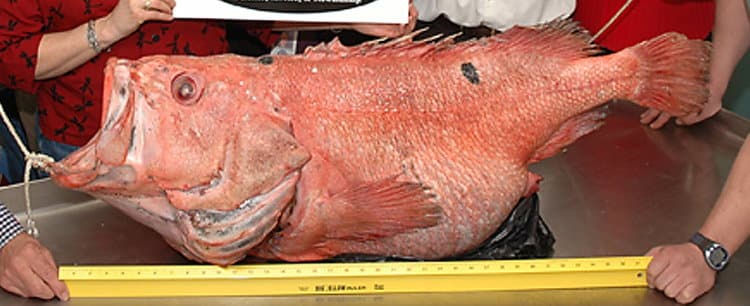
For bony fish the current record holder is a Rougheye Rockfish (Sebastes aleutianus) from Alaska ,which was reported to be 205 years old in 2002 at which time it was still living.
The overall winner however is the Greenland Shark (Somniosus microcephalus). In 2016, a group of scientists estimated the ages of a number of Greenland sharks using radio carbon14 dating. They came to the astounding conclusion that the oldest specimen had probably lived for around 392 years (somewhere between 270 and 510 years) and was therefore born between 1504 and 1744.
This would make it without doubt the oldest known fish, and the oldest known animal living, in the world. Scientists think Greenland Sharks do not reach sexual maturity until they are about 150 years of age.

The Fish With The Largest Egg?
This is a question that is still really unanswered as information is lacking for many species.
However, among the sharks and rays, the largest egg case that is laid belongs to the Big Skate (Raja binoculata).
These egg-cases can be 30 cm long and 19.5 cm wide. However they generally contain more than one egg or embryo… so this is a bit of a cheat.
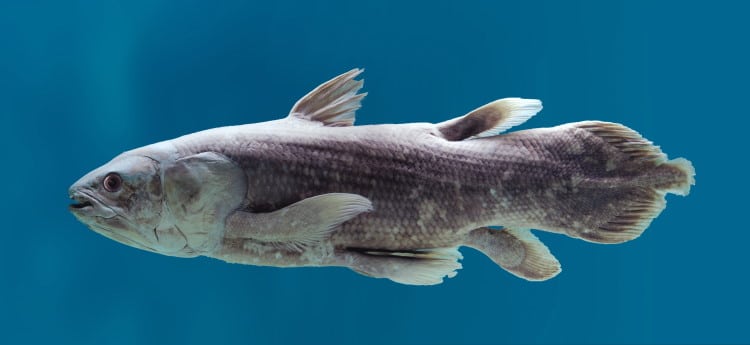
The largest fish egg known to science, in the strictest sense of the word, is the egg of the Coelocanth (Latimeria chalumnae). It is round, with a diameter of between 9 cm and 7.5 cm – and can weigh as much as 325 grams or 11.6 ounces.
This is not large by the standards of terrestrial animals – but remember fish eggs do not need to contain all the developing embryo’s water as bird’s eggs do.
The Deepest Living Fish
Abyssobrotula galatheae has been collected at a depth of 8372 metres in the Puetorican Trench, very little is known about its biology.
Some Basic Language
- Benthic = Living on the floor of the sea, ocean etc .
- Pelagic = Living swimming in the open waters of the sea, ocean etc.
- Epi = Near the surface, 0 to 150 metres.
- Meso = 150 to 1,000 metres in depth (Middle sea).
- Bathy = 1,000 to 3,000 metres in depth (Deep Sea).
- Abysso = 3,000 to 6,000 metres in depth (Bottomless Sea).
- Hadal = 6,000 to 11,000 metres in depth (Unseen Sea).
So an Epipelagic species lives in the open waters of the sea between 0 and 150 metres in depth.
Or a Bathybenthic species lives on the sea-floor between 1,000 and 3,000 metres in depth.
More About Fish:
Well, I hope you enjoyed all these fish facts… but there’s much more to learn. Use these links to explore the fish section of our web site:
Fish Anatomy & Reproduction:
Fish Behavior & Classification:
- Fish Classification
- Fish Evolution
- Fish Life Cycle
- Fish Locomotion And Movement
- Fish Intelligence
- Fish Migration
- Predatory Fish
- Electric Fish
- Osmoregulation In Fish
- Bioluminescent Fish
- Magnetoreception In Fish
- Gender Change In Fish
- What Do Fish Eat?
- Are Fish Cold Blooded?
T. Nanus Image license: Creative commons
Greenland Shark Image license By Hemming1952 – Own work, CC BY-SA 4.0

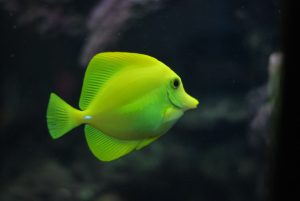
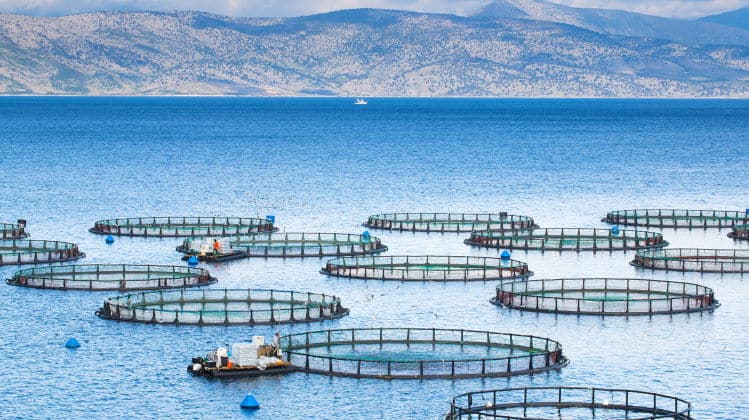
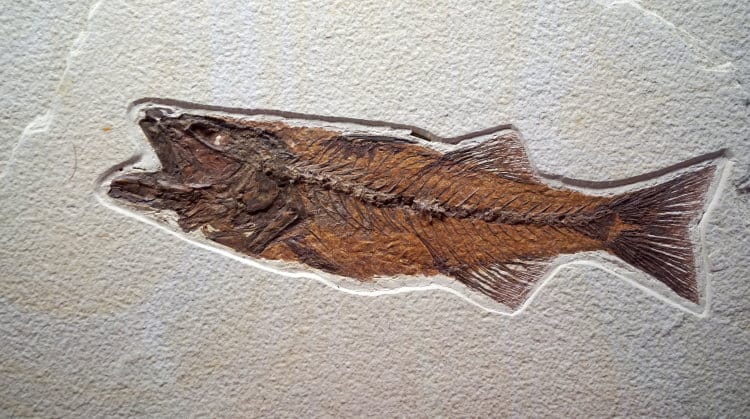

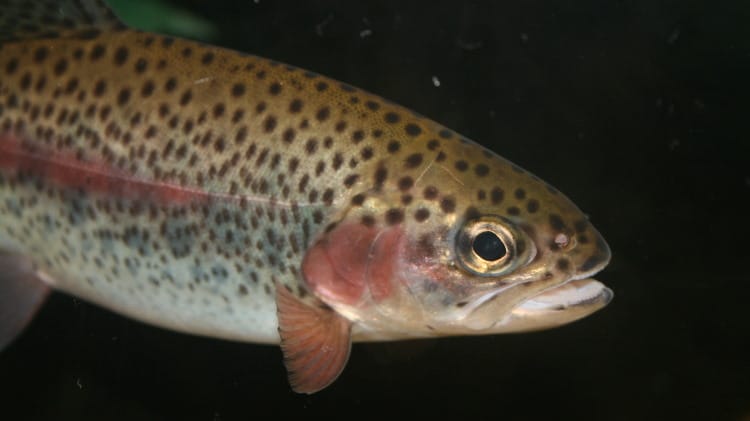
What an interesting site! I woke up at 5am, wanting to know if vertebrate skulls evolved from spines.
Got to hagfish, and then thought I better check back even further to turnicates too! And ended up here.
Now I know more about pelagic turnicates than I ever realised I wanted too! Fascinating things.
Just add something about how fish talk evolved too, and I can tick ‘The Sea’ off as all done!
I like how this site is laid out… very well organised.
I don’t think that’s something I’ve had previous good reason to say about any website- ever!
‘Well organised’ and ‘website’ are things like: ‘practical, well designed, functional public building front doors’ and modern architects. The two concepts are NEVER normally seen together!